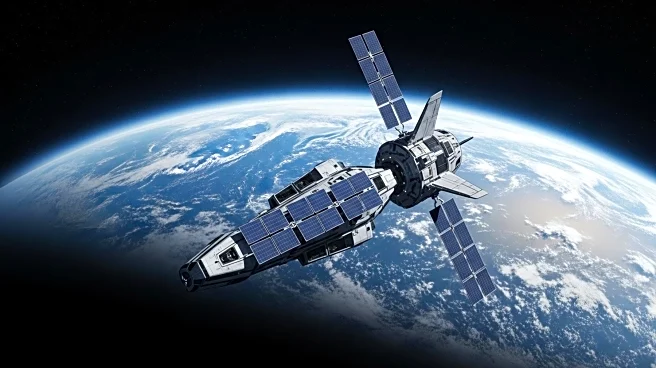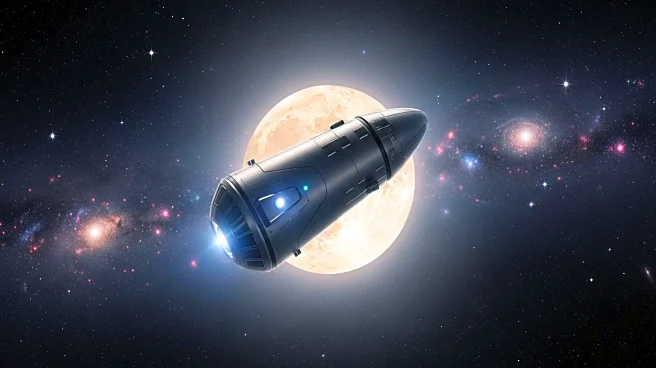What's Happening?
Comet C/2025 R2 (SWAN) is expected to become visible in the night sky in October as it moves away from the twilight glare. Currently observable with binoculars, the comet will reach its closest point to Earth on October 19, at a distance of about 24 million miles. Discovered by a spacecraft observing the Sun, the comet takes 22,000 years to orbit the Sun, making its appearance a rare event. NASA has also announced that the first crewed mission to orbit the Moon could launch as early as February 2026.
Why It's Important?
The visibility of Comet C/2025 R2 offers a unique opportunity for astronomers and the public to observe a celestial event that occurs once in a lifetime. It highlights the importance of space exploration and the role of technology in discovering and tracking astronomical phenomena. NASA's announcement regarding the Moon mission underscores advancements in space travel and the potential for future exploration. These developments contribute to scientific knowledge and inspire interest in astronomy and space science.
What's Next?
As the comet becomes more visible, astronomers and enthusiasts will have the chance to observe and study its characteristics. NASA's planned Moon mission may lead to further advancements in space technology and exploration. Public interest in astronomy could increase, leading to educational initiatives and community events focused on space observation. The comet's appearance may also prompt discussions on the significance of celestial events and their impact on scientific research.
Beyond the Headlines
The comet's long orbit period raises questions about the nature of celestial bodies and their influence on Earth's history. It may lead to discussions on the cultural significance of comets and their role in human understanding of the universe. NASA's Moon mission highlights ethical considerations in space exploration, including the potential impact on lunar environments and the importance of international cooperation in space endeavors.










